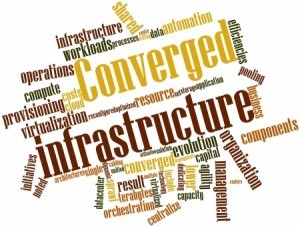Kevin Gruneison, Senior Director Data Centre Solutions at Logicalis Inc, explains why a move to a converged infrastructure is as much about different thinking as it is about different technology.
Converged Infrastructure - how do you get there?
In a recent blog post entitled The Virtualisation Journey. Part 2 – Brave new world, my colleague Alex Watson-Jackson made an excellent point. Namely that virtualisation is no longer an end in itself, but a key step in an IT transformation journey – a journey away from component-based architecture, to a converged infrastructure.
That all sounds rather techy, so let’s put it in a meaningful context. Virtualisation is a vital step along the road that will transform IT from cost centre to key corporate service provider – one that provides computing power as a utility and which plays a far more direct role in underpinning competitiveness.
As Alex put it, “…virtualisation holds the key to delivering a truly converged infrastructure that is more efficient, more able to adapt to changing business requirements and easier to maintain and support.”
But, as the title of this blog suggests, successfully navigating this journey is not simply a technological challenge. It also requires an entirely new outlook; a new way of viewing IT.
That is, IT transformation begins when the organisation stops thinking in terms of discrete servers and storage for every application and starts thinking about shared interoperable resources across the entire IT infrastructure. That is, servers, storage, networks, applications and management – all the technologies the enterprise uses today – have evolved to the point where they can be converged into a single entity.
Once you make that leap, then the road to a converged infrastructure emerges – but you still have to define the journey and, more often than not, that starts with a process of working out where you are now – not just where you want to go. In other words, “Are we ready for convergence and, if not, what needs to happen first?”
You can take a simple IT transformation test here to get a feel for where you are along that transformation journey.
But, getting back to the point, delivering IT transformation is as much about thinking differently as it is about new technologies. Moving towards a converged infrastructure that really delivers means thinking more than ever about how technology and business work together – from cost and risk to culture and collaboration.
Here are some thoughts to get you started:
- Define A Realistic Process: Most companies don’t have unlimited budgets for IT, so there needs to be a realistic process in place that will enable the IT department to transform a company’s current heterogeneous, often haphazard IT environment into a well-organised converged infrastructure as time and actual budget allow.
- Give Change a Chance: Don’t be sold on moving the enterprise to a new infrastructure architecture without fully understanding the risks as well as the rewards.
- Break Down the Walls: One of the biggest roadblocks to a unified infrastructure is not technology, but politics. Before it’s possible to link the company’s infrastructure together, IT is going to have to break through some silos from the top down. The existing culture reflects the mindset that every application requires its own dedicated server, network interface, storage device, etc. It’s ITs job to get the entire organisation to understand the ‘shared use’ model that a converged infrastructure makes possible.
- Don’t Let the Company’s Legacy Become Its Legacy: The time to address legacy systems and establish realistic milestones to replace them is now, before they cause problems.
- Time to Take Out the Trash: Migration day is a great excuse to get rid of those things that just seem to be hanging on and taking up space – the old hardware, apps and data that no longer serve a purpose.
- Change Like You Mean It: IT policies and procedures used to be geared to maintaining the status quo But today, people are more interested in business agility – the ability to respond rapidly and cost efficiently to changes in the business environment. A characteristic of business agility is that it makes change a routine part of organisational life. In many ways, business agility is the business counterpart to a converged infrastructure; both have the feel of controlled chaos about them. The policies and procedures that are put in place for a converged infrastructure must ensure that purposeful, constant, controlled change – not chaos – becomes the status quo.
Overall, the point is this. The thinking behind a converged infrastructure cannot, almost by definition, be about technology first.
Planning has to start with the business – its needs, its users and its overall strategy – and that ‘business first’ thinking is the mindset shift that will ensure your converged infrastructure really does have business and technology working as one, if I may coin a phrase.

